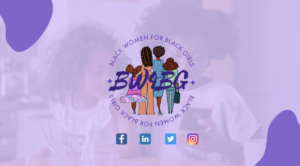Ethics in Graphic Design
1A:
My supervisor had instructed and insisted that I make a brand new logo or revamp their current one. They had no contact or memory of who made their initial first logo. After conversing for awhile, we agreed to revamp their current logo. I told them I will not be taking credit for as I am simply redoing the design just for higher quality. The ownership still belongs to the artist who originally made the logo, I just cleaned the pixels and quality of the image better.
1B:
My internship did not require a confidentiality or non disclosure agreement. I only had direct contact with my supervisor and the president of the organization. Nothing shared or posted online.
2A:
At the time, when I was beginning graphic design, I use to mimic the style or effect of another designer. i made sure to avoid straight plagiarism. At times when I was learning the graphic design world through school, I started reaching out the artist or designer directly. I would show them the work I was inspired from. and then my piece and what I mimicked or tried to do with it! I made sure they were comfortable and acknowledged me giving them the credit they deserved.
2B:
The Fairey case is a serious and common issue that I dislike within the graphic design community. As much as I love design, we do not get to see the original version of their design. It is very very vital and serious that Garcia gets the money and credit and recognition he deserves for even having the shot and getting the experience to be close with Obama. It was unfair to see that Fairey did not go out his way to credit the artist and settled with a replica. On top of that to make a huge profit off of it. Fairey violated a code of conduct which was copyright! He purposely went out his way to avoid the legal fight by destroying any sources that revealed his use of Garcia’s work.
Fairey would have never went through this if he complied and acknowledged Garcia. He had to go as far as getting a criminal case for stealing his work, “Last year Mr. Fairey admitted that he had misstated which A.P. photo he had used for the Obama image and that he had submitted false images and deleted others to conceal his actions, leading to a criminal investigation in addition to the civil case.” which is far from okay and no artist should ever do. He learned that credit is very vital and serious no matter how much you have a vision for a campaign or brand.
This legal issue reminds me of many designers discrediting small black and brown businesses of today. Or even using cultural figures, history or items for their fashion ‘trend’. Such as Marc Jacobs, he hosted a show in summer 2017 where every white model was wearing ‘dreads’ and he refused and pretended he didn’t know this was a black women’s protective style. A year later, he even mimicked middle eastern culture by putting turbans on the same white models again. Completely discrediting and disregarding the cultural aspect again or what he said was “for the collection cited the 70s as the inspiration but made no reference to the head wrap’s origins.” He had been using the excuse of not knowing the culture instead of paying homage. This is something we need to start doing and recognizing credit especially if it’s from a culture that isn’t yours.
Sources:
Srivastava, Akarshi, and Akarshi SrivastavaAkarshi is a Fashion Journalist at ShilpaAhuja.com. She has completed her bachelor’s degree in Fashion Design from Amity University. “Cultural Appropriation in Fashion: A Complete Guide.” Shilpa Ahuja, 28 Mar. 2022, https://shilpaahuja.com/cultural-appropriation-in-fashion/#:~:text=If%20you%20may%20ask%20the,new%20but%20prevailing%20for%20decades.
Kennedy, Randy. “Shepard Fairey and the A.P. Settle Legal Dispute.” The New York Times, The New York Times, 12 Jan. 2011, https://www.nytimes.com/2011/01/13/arts/design/13fairey.html.














